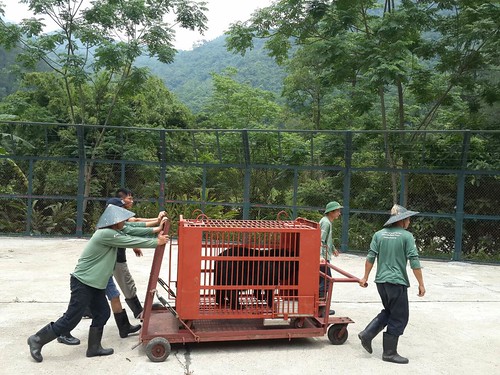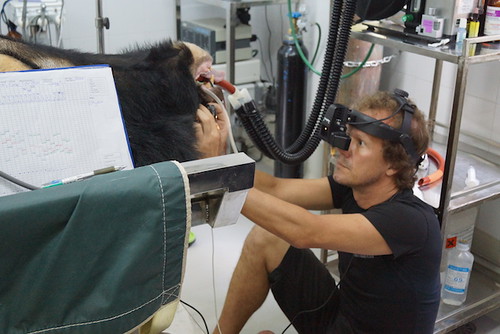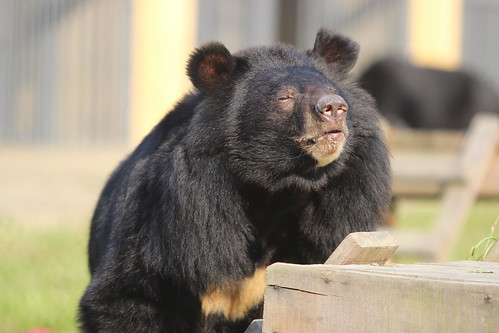Five steps from bile farm to freedom for rescued bears
12 May 2015

Once a bear has been freed from a life of bile extraction, the true road to recovery begins.
Their cages can be left thousands of kilometres behind, but decades of pain and suffering are harder to erase. The rehabilitation of a bear is a long and very individual process, but there are five steps each bear must pass on their personal journey to recovery.
1. Quarantine
When bears arrive at the sanctuary, they will first need to be quarantined for 45 days. It’s a vital step to protect the health of all the bears at the sanctuary, but also requires careful management to keep the bears stimulated.
During this time there’ll be plenty of extra treats, as well as puzzle feeders and even new tastes, sounds and smells specially designed to stimulate the bears and fend off boredom.
2. Health checks
When the vet team believes they are ready, rescued bears will receive full health checks and any medical procedures they require. This might include the removal of their gall bladder if significantly damaged by bile extraction. For many bears rescued from the bile industry it will include extensive dental surgery to remove damaged teeth from a lifetime of poor diet and vain attempts to chew their way to freedom through iron bars. If painful conditions are discovered, vets will be able to improve the animal’s welfare either with surgery or medication.
3. Dens
Following quarantine, bears can expect to be moved to a much larger indoor area known as a den.
When moving to a new, larger environment, the reaction of each bear will very much depend on their personality and past experiences. Some rescued bears, such as Shamrock and Peter initially find the move to a larger space traumatic and can be reluctant to enter at first. Others immediately relish having more space to play and jump right in.
4. Meeting the neighbours
Once each bear is comfortable in a den, the next step is usually careful integration with other bears. Moon bears are not thought to be social animals in the wild, and so communities must be carefully selected and managed.
Prior to integration, sanctuary staff carefully monitor the bears for signs of stress or aggression. If there are no negative signs, then the bears will be introduced in a non-threatening environment under careful management. Long term, relationships can be extremely therapeutic for rescued bears, with many – such as Mama and Moggy or Bonny and Prince – forming strong, life-long bonds.
5. The green green grass of home
The most significant step in any bear’s rehabilitation is their first steps out into an enclosure. Whether this takes place before or after integration with other bears, it is a milestone in any bear’s recovery and – like the introduction to a den – each bear reacts differently. Some – like Ti Map – take time to fully trust large open spaces, while others are quick to explore every nook and cranny.
Over time, rescued bears come to realise that their new good life is for ever and start to relax. They learn to live with other bears, to trust their human carers – to forage and play and finally live the life denied them by the bear bile industry.
Finally, we must remember that those who exploit the bears see them only as property and a resource – we see each bear as an individual. That means every single bear will be respected, carefully monitored and have a slightly different route from farm to freedom especially tailored just for them.
BACK








 Healing the hidden wounds
Healing the hidden wounds
 Early summer awakening at the China Bear Rescue Centre
Early summer awakening at the China Bear Rescue Centre
 5 reasons the dog meat trade must end
5 reasons the dog meat trade must end